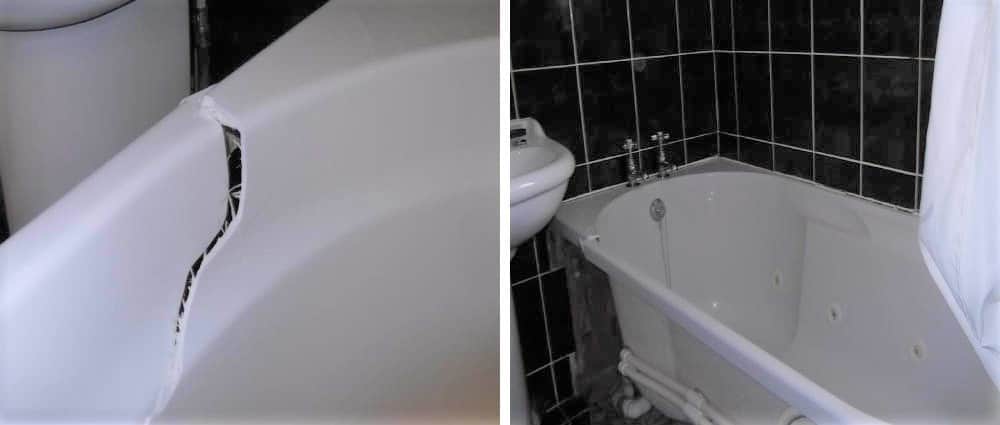Cracking is a widespread occurrence in fiberglass bathtubs. There are three reasons why bathtub cracks, including materials used, damage from aggressive cleaners, and damage from weighty objects. But some materials tend to be more flexible than others, which means they will bend if heavy objects are placed on them, thus preventing cracks. But if this flexible material is not installed with reinforcement, the weight will form pressure that will lead to cracks over some time.
Regardless of how the bathtub cracked, you have two options: repair it before it gets worse or buy a new one. We made a selection of the best farmhouse baths that might help your buying decision.
One of the most common ways people think they can fix a cracked bathtub is by applying a flex seal. But can flex fill a cracked bathtub?
Unfortunately, no, because flex seal doesn’t have structural properties to fill up the crack. Though a thick layer can stop the leak, this will be temporary. The crack on the tub will keep widening over time and eventually break.
So how do you fix a bathtub crack?
The tips I’m about to share with you are for porcelain tubs. If you have metal bathtubs, you should have them welded to fix the crack. You can take it to a welding shop or call a professional to fix it in your home.
Fixing a porcelain bathtub
You will need a bathtub repair kit for this job. Just buy one from your local hardware store or home improvement.
You may be required to use a patch if the crack is big.
- Using a bathroom cleaner and a sponge, wipe down the cracked area of your bathtub and rinse it thoroughly.
- Polish the crack as well as the area around it using fine-grit sandpaper. Wipe off the dust with a clean cloth and spray it with denatured alcohol.
- Read the instructions on the repair kit. You may be required to create the filler from the provided components. If that is the case, just read the directions and mix your paste.
Mixing the paste is easy. Just place the mixing tool and mixing bowl into a rug or newspaper and stir the components, typically consisting of hardener and resin. Make sure you have read the instructions correctly to know the proportion of each element in the filler.
Most repair kits come with paint so that you can apply it over the patch to disguise the mark once it dries up. So check that you add the color to the mix as you prepare the paste and make sure the color matches your bathtub.
- Cover the crack and its surrounding area using an applicator (should come with the repair kit). Apply some pressure while covering the crack to allow the filler to infiltrate deep into the crevice. If the crack is too big, you will need to use fiberglass to fix the patch. If that is the case, cover one side of the fiberglass with the filler and carefully put it onto the crack. Apply the filler along with the patch and slightly outside the edges so that the patch is firmly secured.
- Leave the filler overnight to dry or whatever the amount of time recommended by the manufacture. Come back the next morning, sand the surface to get rid of the roughness, and use a soft rag to wipe off any dust from sanding. Apply paint carefully over the dried filler to conceal the patch.
Alternatively, you can hire a professional to work on your cracked bathtub, which should cost you between $80 and $150 an hour. This is quite expensive compared to around $50 you will spend to repair it yourself.
How to prevent bathtub cracks
To ensure your bathtub stays long without cracking, install it with sufficient reinforcement so that your weight will not strain or flex the material of the tub. Also, avoid using abrasive cleaners like bleach and avoid dropping heavy objects like toasters in the tub.

